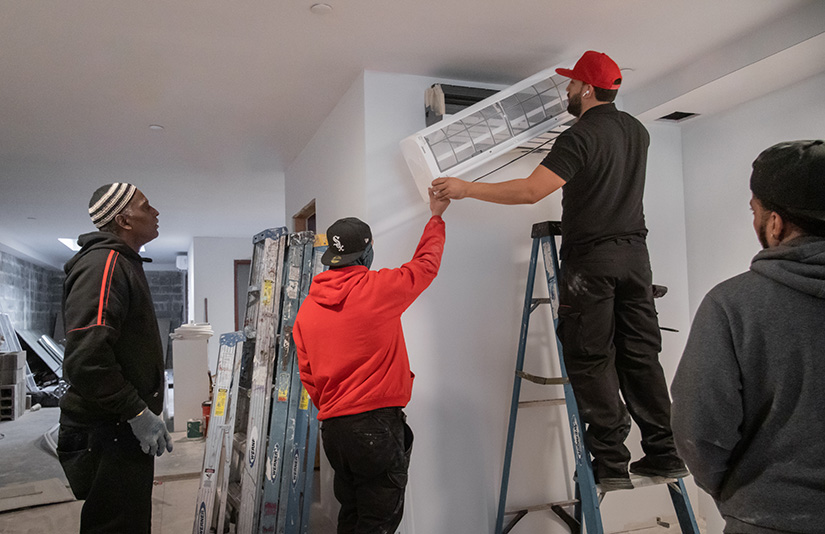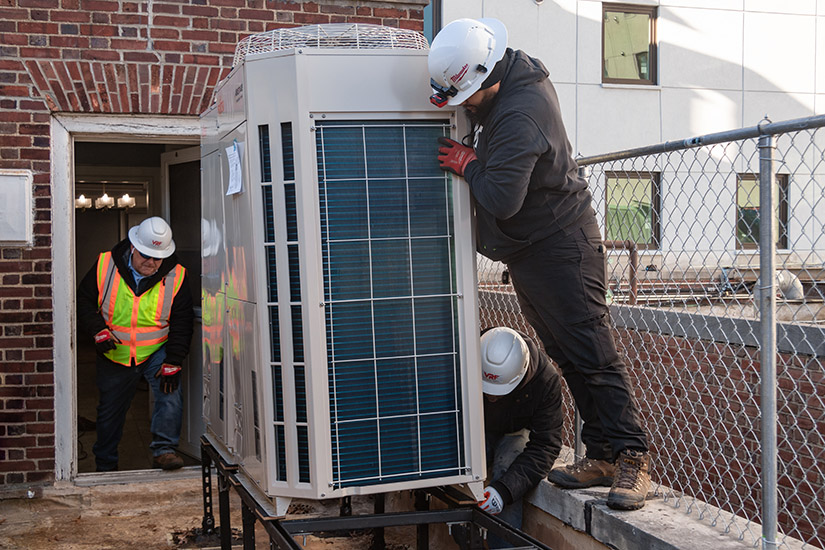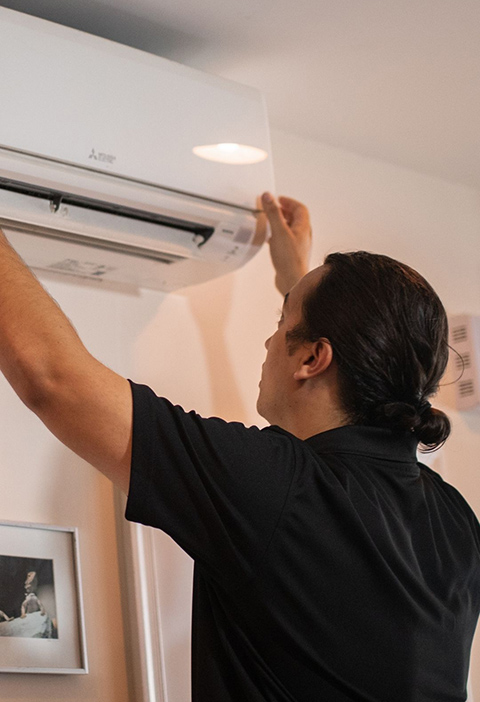IN² Demonstration: Electrification—One Building at a Time
For its 10th cohort, the Wells Fargo Innovation Incubator (IN2) formed an all-demonstration group where each participant would scope and perform a demonstration of their technologies as part of the program.
The IN2 startups will complete their demonstrations over the next year or two, helping them in their goal to see their technologies gain market acceptance. Giving each startup a real-world opportunity for its technology backed up with technical assistance from National Renewable Energy Laboratory (NREL) helps de-risk new customer acquisition by providing a concrete example of success.

Donnel Baird, CEO of BlocPower, likes to say he wants to turn buildings into Teslas, but this goal of electrifying buildings around the country means a bit more.
"We retrofitted a church on my block where I grew up as a kid," Baird said. "I walked past that church every day. When I was young, we heated our home with a gas oven, and we would open the oven door to heat our home in the winter. As an adult, to come back to that same city block and reduce emissions, that was a nice full-circle moment."
Because buildings contribute to 30% of global greenhouse gas emissions, BlocPower aims to reduce these emissions by renovating buildings, removing fossil fuel equipment, and changing the buildings over to use electric systems, typically with a heat pump. Heat pumps transfer heat between the outdoors and indoors, taking advantage of the same vapor-compression technology efficiencies from traditional air conditioners and applying them during both heating and cooling modes. To date, the company says it has worked with more than 5,000 families in Brooklyn and has electrified approximately 3% of the five- to 50-unit apartment buildings in New York City.
"The future of the human race is in our hands," Baird said. "We have all of the hardware and software capability that we need to dramatically reduce emissions."
Through its IN2 demonstration, NREL is helping BlocPower assess how those technical capabilities can perform in the field.
BlocPower is not deterred by the economic, workforce, and supply chain challenges that come with mass deployment. The company has contracts to electrify three U.S. cities in the next six years: Ithaca, New York; Menlo Park, California; and San Jose, California, the 10th largest city in the country. BlocPower also has smaller contracts in Atlanta, Georgia, and Milwaukee, Wisconsin.
Baird has a fierce optimism that drives him to get this work done.

BlocPower hopes its technology will reduce the reliance on gas- and oil-powered heating and cooling systems. Photo from BlocPower
"Over the next five years, we're going to decarbonize every single building in these cities," Baird said. "I think people don't believe that we're actually going to do it, but we are going to do it. We worked with NREL to build digital twins and predictive models on how to electrify each building."
As part of BlocPower's participation in the IN2 demonstration cohort, it is running a demonstration in the New York area to test a technology called electric thermal storage (ETS), which is a radiant heating system.
"It's basically a big ceramic brick that stores and discharges heat," said Matt Leach, NREL senior researcher in the commercial buildings controls and analytics group and the principal investigator for the BlocPower IN2 project. "If you heat something up that has high thermal capacity, it stays hot for a long time. It's similar to an old-timey wood stove—that cast iron stays hot for a while once it's hot and that warms up the space."
The idea is that a heat pump will warm a building in the winter, replacing the traditional steam radiators. Additionally, occupants can charge the ETS system to keep an apartment or other multifamily living space comfortably warm and reduce peak electricity demand charges, even during the coldest temperatures. BlocPower's IN2 demonstration will help answer the question of how often, if at all, the ETS is required to meet the occupants' heating needs during the next winter season. While this demonstration focuses on the heating season, these same heat pumps also provide cooling during the summers.
"These buildings are typically 80 to 100 years old, so the insulation is not great and it's cost-prohibitive to upgrade," said Dominique Lempereur, BlocPower's chief of engineering. "With the heat pumps, we are replacing a steam radiator, which made me think about bringing a radiant heat system, like ETS, to these homes. Additionally, many heat pumps go into buildings that maintain a system that uses fuel as a backup. The ETS can replace gas as a backup, and then you have a 100% electric solution that works."

A man installs a heat pump into an existing apartment building. Photo from BlocPower
For its IN2 demonstration, BlocPower is partnering with Steffes Group, a leader in ETS technology. The hope is to have the demonstration in place within the next year and have the full testing begin at the start of heating season, October 2024. BlocPower will monitor temperatures and electric consumption and ensure third-party analysis to avoid bias. Lempereur expects to have everything wrapped up by May 2025.
"They're going to install the ETS along with the heat pump and try running it in different operating modes and see: Is the space more comfortable? Is the energy bill higher or lower?" Leach said.
While this demonstration is vital work, when Baird talks about BlocPower's overall mission, the technology is not at the forefront. He wants to make sure BlocPower helps underserved communities with the transition to clean energy—not just the wealthier sectors of America. Additionally, he wants to create a community workforce that serves their neighbors.
"The vision for New York City's BlocPower Civilian Climate Corps is based on public safety, investment, and shared accountability," Baird said. "It was an idea born from the pandemic, where the city faced major economic, environmental, and social distress. In 2021, jobs for the communities most impacted by gun violence was the intervention the mayor's office chose to invest in with BlocPower. In this program, individuals from communities vulnerable to gun violence and climate change are trained to lead a greener, safer future."
Many of these workers helped BlocPower by working with its contractors. They might show up to a BlocPower site and help fish wire through a building, install refrigeration lines, and more, under the supervision of the electrical or heating, ventilating, and air conditioning (HVAC) contractor chief.
"We successfully integrated many members of this workforce development program with actual work," Lempereur said. "A handful of them have found a permanent job and were hired by those HVAC contractors."
When Baird talks about why he is so focused on this, he discusses the future he wants to leave to his son. "We must collaborate and work together to expand clean energy across America," he said.
Learn more about the IN² program.
IN2 Demonstration Series:
- IN² Demonstration: The Possibilities of a Plug-and-Play Kitchen
- IN² Demonstration: Getting Control Outside of the Lab
- IN² Demonstration: Getting V2G Good To Go
- IN² Demonstration: Startup Transforms Transformers for Electric Vehicle Charging Efficiency.
This article has been updated to reflect an editorial change made after its original publication.
Last Updated May 28, 2025
